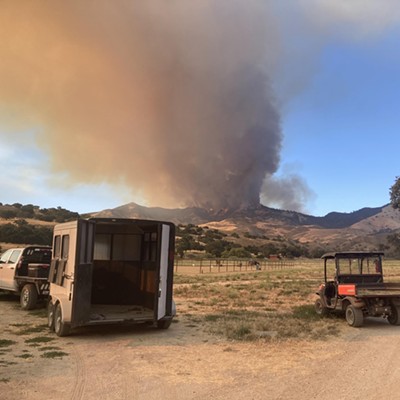Preliminary findings in a U.S. Geological Survey (USGS) study show indications of oil field-related substances mixing with groundwater at various sites in the Orcutt oil field. Local environmental groups are using these unofficial findings to protest further oil and gas projects in Santa Barbara County.
In a 33-page letter to the Santa Barbara County Planning Commission, the Environmental Defense Center and other groups cite these unofficial results, along with their own research, as reasons to deny a project proposal from ERG to develop 233 new oil wells in Cat Canyon.
“The purpose of this letter is to provide the commission with important new information concerning ERG’s unsafe operating history … and new evidence of local groundwater contamination from oil operations in and near Cat Canyon,” the letter states.
Although ERG operates wells in Cat Canyon, which is near Orcutt, it doesn’t operate in the Orcutt oil field where the USGS study took place. The Planning Commission is set to make a decision on the ERG project after a third public hearing on Aug. 14.
The USGS study that the Environmental Defense Center cited in its letter is part of a regional groundwater monitoring program run by the federal agency and the State Water Resources Control Board. Through this program, which was established by Senate Bill 4 in 2013, the state and federal agencies look at how oil and gas operations affect groundwater, said John Borkovich, groundwater monitoring section chief at the water board.
Through this program, the USGS identified more than 100 high-priority oil fields to consider for monitoring. Orcutt is considered to be a high priority because of the high volume of injection wells present in the oil field, according to USGS Monitoring Program Chief Matthew Landon.
USGS researcher Robert Anders presented the preliminary results of the Orcutt study at a stakeholders meeting with other USGS and state water board officials in February. The meeting was recorded and is accessible on the water board’s website.
Borkovich said it’s too early to draw conclusions from information shared in that meeting regarding how oil and gas production in the Orcutt Oil Field is affecting the groundwater. The final USGS report will provide more definite answers when it’s released later this year or early next year, following a peer review process.
“The assessment of looking at all these several lines of information and data and coming to a conclusion is still in the works,” Borkovich said. “So I think it’s speculative at this point to say for certain one way or the other.”
Kim Taylor, USGS California Water Science Center program officer, said the agency was surprised that the video from the stakeholders meeting was made public and is concerned about the attention the unofficial information has received. Normally, the USGS doesn’t publicly share information on its findings until they are final.
“We’re a little sensitive about that fact that this preliminary information has been the basis for a lot of press and emphasizing that it’s preliminary, and we will be coming out with a USGS product that will be definitive,” Taylor said.
However, the federal agency’s caution hasn’t stopped the Ventura County Board of Supervisors from acting on information presented in the February meeting. During the same meeting, in which Anders discussed the Orcutt study, a different USGS researcher said that similar preliminary findings were collected near Oxnard.
Following this, at an April meeting, Ventura supervisors unanimously approved a 45-day moratorium on new steam injection wells in the area identified in the study. On June 4, after press time, supervisors planned to vote on extending the moratorium to one year.
In his presentation, Anders said that four of the 16 groundwater wells the USGS sampled between 2017 and 2018 in Orcutt showed some signs of oil field substances—including indicators of natural gas, methane, and produced water in two wells overlying the oil field.
None of the four wells identified are used for public consumption, Landon said. One is used for watering landscape, one is used for industrial purposes, and two are used for monitoring water quality.
In addition to checking wells overlying the oil field, researchers sampled wells adjacent to the oil field within 3 miles.
In one of the adjacent wells, researchers found indicators of produced water—a byproduct of oil and gas production—which could be attributed to the historic use of surface pond disposal sites in the area, Landon said. These disposal sites are no longer allowed in the Orcutt field.
In the other adjacent well, researchers found oil field substances, along with chemicals found only in industrial settings and not oil production.
“So we see some geochemical indicators suggesting that there’s oil field water mixing with the groundwater at this site, but there also is some evidence of some other industrial source, which we don’t know anything about, affecting groundwater at this site,” Landon said.
While researchers identified potential reasons for finding oil field related substance in the two adjacent groundwater wells, they can’t determine why the fluids were detected in the two wells overlying the oil field. Landon said the substances could’ve reached the groundwater through natural or unnatural processes.
A more in-depth study looking specifically at these two wells would be needed to make this determination, Taylor said.
“Sometimes we can determine pathways and other times we can’t,” Taylor said. “And in this situation, I think the sense is we aren’t going to be able to nail down the pathways in Orcutt with this sampling.”
Reach Staff Writer Zac Ezzone at [email protected].








